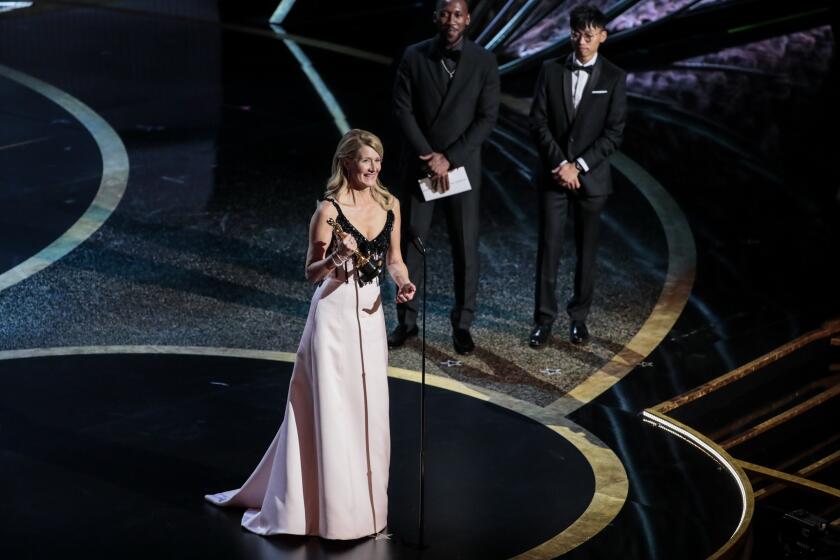World War I adventure ‘1917’ wins visual effects Oscar
- Share via
Sam Mendes’ World War I adventure “1917” collected a win for perhaps the least expected Oscar of its nominations: for visual effects. However, the win continued the academy’s habit of awarding the VFX Oscar to a best-picture nominee.
“Thank you to the academy for this tremendous honor,” said VFX supervisor Guillaume Rocheron in accepting the Academy Award. “ ‘1917’ is what you call a dream project, an opportunity to challenge how we approach visual effects, but also a chance to collaborate with some truly fantastic people. Thank you to Sam Mendes for being so inspirational and leading us through this epic journey.”
Get the latest on the Oscar winners, the best-dressed and behind-the-scenes action from L.A. Times journalists inside and outside the Academy Awards.
The film did include some showstopping digital moments: a dogfight witnessed by the earthbound soldier protagonists ending in the losing plane crashing into the barn where the soldiers had just been standing and a visually beautiful nighttime battle sequence.
But Rocheron said in an earlier interview with The Times that the main task was maintaining the illusion that the story had been captured in one continuous shot. He said that the lack of cuts enabled viewers to process the images for far longer than in most films. That, and being shot in Imax 4K resolution, meant digital creations had to withstand longer, harder scrutiny than usual. It also meant, plane crashes and battles aside, much of what the effects team did was to uphold that one-shot illusion as the scenes actually moved from location to location.
“Every transition is handcrafted and has its own, very precise solution to look absolutely seamless,” Rocheron had told The Times. “It used a very wide range of techniques. Some took 2 1/2 months of work to get those few seconds — matching the lighting and the flow of the camera, the movement of everything.”
In perhaps the most extreme case, a soldier runs from a bombed-out town, jumps off a bridge into a river that turns into rapids, and emerges in a forest.
“The city was built [in one location] and the river was shot in an Olympic water park: a canoe training center, basically — a man-made structure with walls and things like that,” Rocheron told The Times. “All the environment around it is completely digital. We digitally created an actor jumping off the bridge and going into the river. Those two locations are probably 150 miles apart.”
In besting flashier contenders such as “Avengers: Endgame,” “Star Wars: The Rise of Skywalker” and “The Lion King,” “1917’s” triumph added to the compendium of winners also nominated for best picture. Since 1977, when at least one best picture nominee has also been nominated for visual effects, the award has gone to one of the dual nominees every time but once, in 2015 (when “Ex Machina” topped three best-picture nominees).
More to Read
Only good movies
Get the Indie Focus newsletter, Mark Olsen's weekly guide to the world of cinema.
You may occasionally receive promotional content from the Los Angeles Times.













